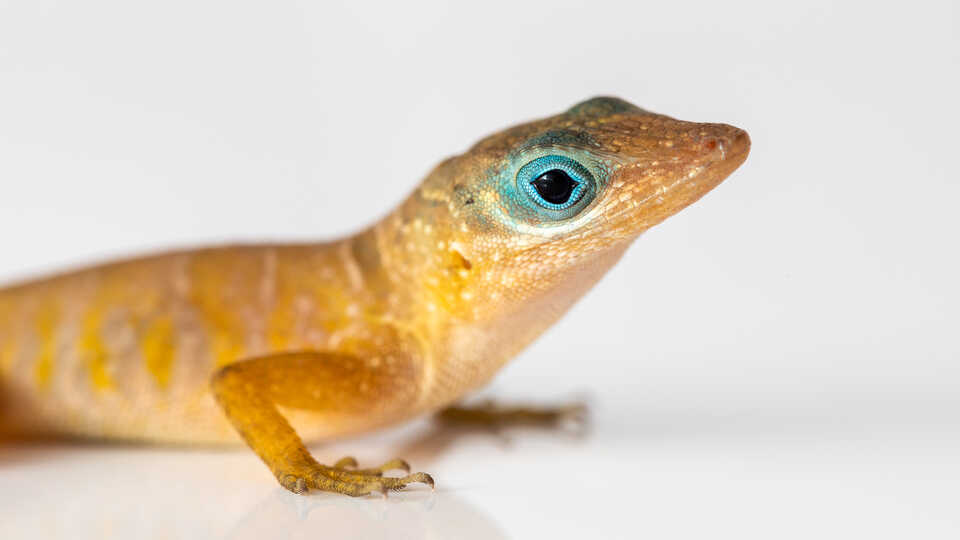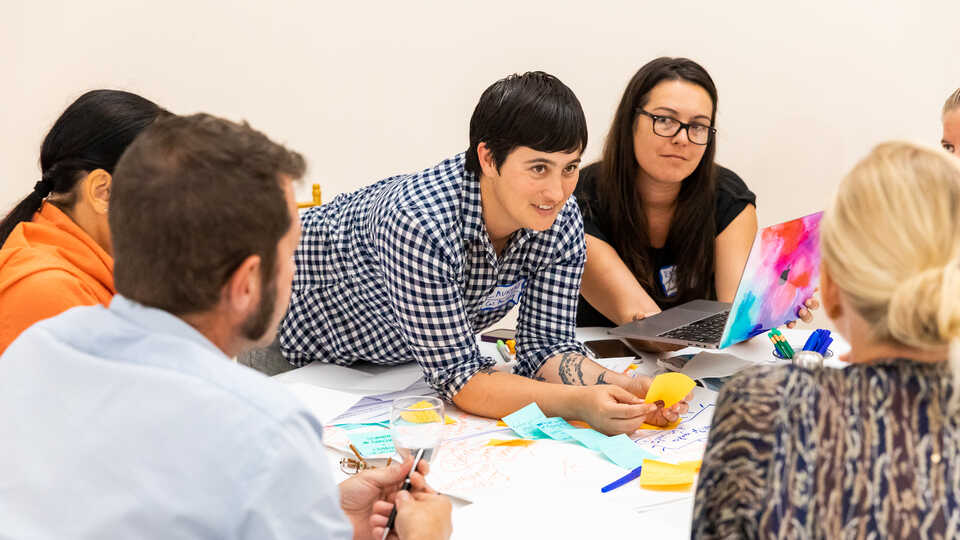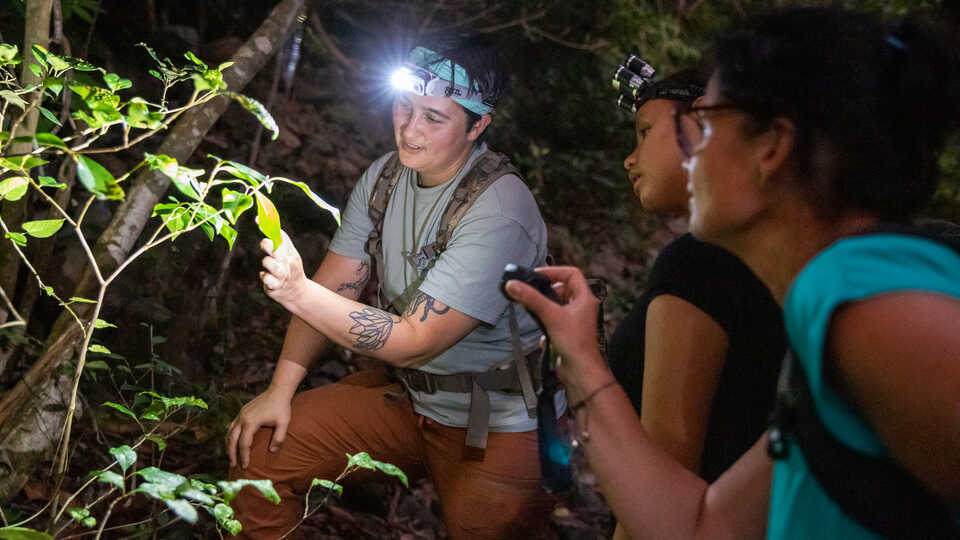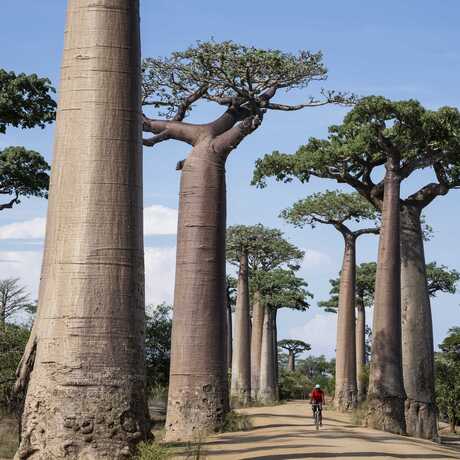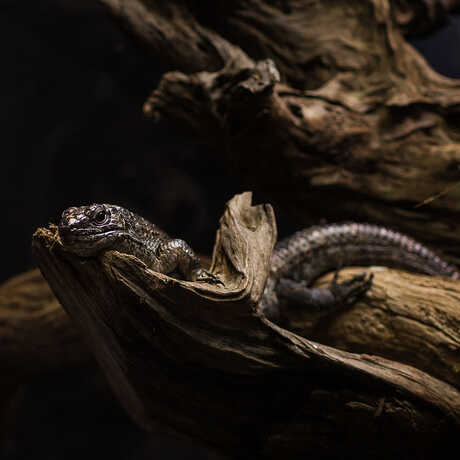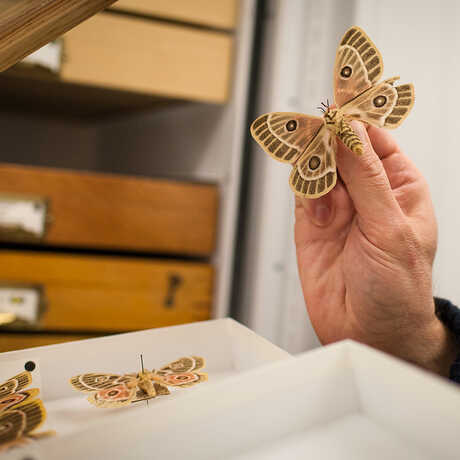Scientific Expeditions
Islands 2030: St. Martin
The Academy has landed in the Lesser Antilles! Explore the community collaborations powering our efforts to protect biodiversity on St. Martin.
Don’t let its modest 34 square miles fool you: The tiny Caribbean island of St. Martin is a biodiversity bonanza. For the official launch of our Islands 2030 initiative in the Lesser Antilles, Academy staff traveled to St. Martin to research its unique terrestrial biodiversity and embark on exciting collaborations with local communities. We’re honored to work with such passionate partners on this multinational island, and look forward to sharing updates about the innovative solutions that will help its people and nature thrive together.
Island-hop around the world with us! Follow the Academy's Islands 2030 team on social media and with the #Islands2030 and #CASfieldnotes hashtags.
Expedition highlights
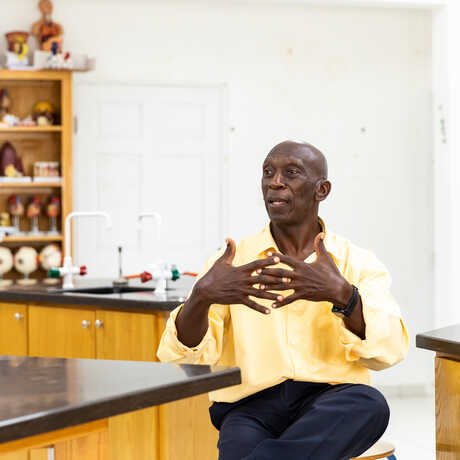
Listening sessions
The Academy kicked off a major nature- and science-education project with our partners at Nature Foundation St. Maarten, facilitating 20+ listening sessions with teacher, parent, and student groups to inform the co-creation of new science and nature educational materials that feature St. Martin's unique biodiversity.
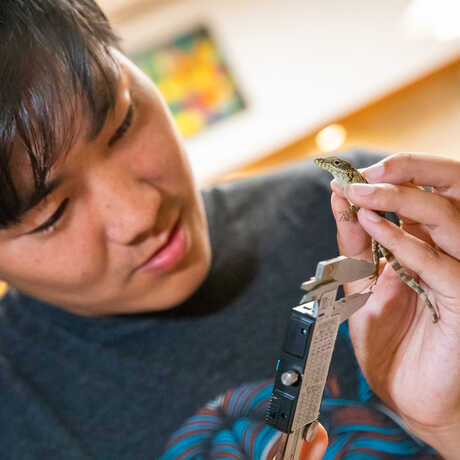
Surveys and sampling
Thanks to its relative isolation from other landmasses, St. Martin is home to many endemic species found nowhere else on Earth. Academy researchers led public night hikes with community members, collected genetic samples of native reptiles to assess genetic diversity and health, and found at least three undescribed species during biodiversity surveys—including one charismatic jumping spider.
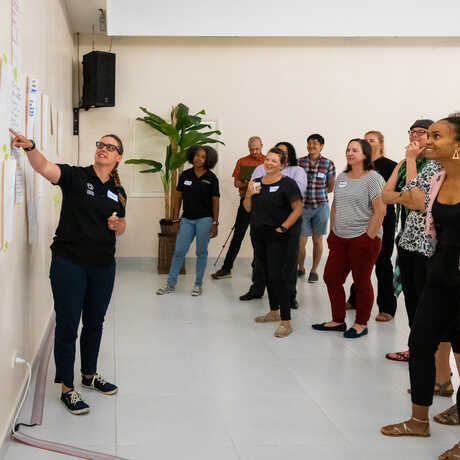
A first-of-its-kind convening
The Academy hosted the daylong “Framing the Future of Biodiversity in Sint Maarten/Saint-Martin” convening, welcoming attendees from both of the St. Maarten and Saint-Martin environmental agencies, Fauna and Flora International, Environmental Protection in the Caribbean (EPIC), the St. Maarten Tourist Bureau, and more. Participants engaged in dynamic discussions about how to co-create a regenerative, equitable, thriving future for everyone—and everything—on St. Martin.
Partner profile: Eudoxia Williams-James
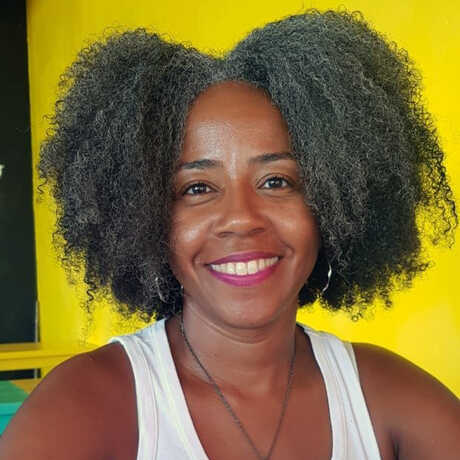
Eudoxia Williams-James joins the Islands 2030 team as Education Project Coordinator for Saint Martin, a role that leverages her deep roots on the island and her 22-year career in education. Her love for Saint Martin expanded when she discovered the beauty of its nature through hiking; today, she leads efforts to ensure that island youth have the resources and opportunities to create their own connections to nature. “Nature education must start at an early age,” she says, “if the goal is lasting change.” Eudoxia is based with Academy partners Nature Foundation St. Maarten.
What's next
- Academy scientists are working to describe the possibly new-to-science spider species they collected on St. Martin as well as glean insights from native reptiles’ DNA to inform conservation efforts.
- The Environmental Learning team is synthesizing data from the listening sessions and preparing a collaborative design process with on-island teachers to create a new program that will be piloted by November 2022.
- Academy communicators are partnering with Amuseum Naturalis to craft an island-wide campaign centering native species.
Stay tuned for more updates!
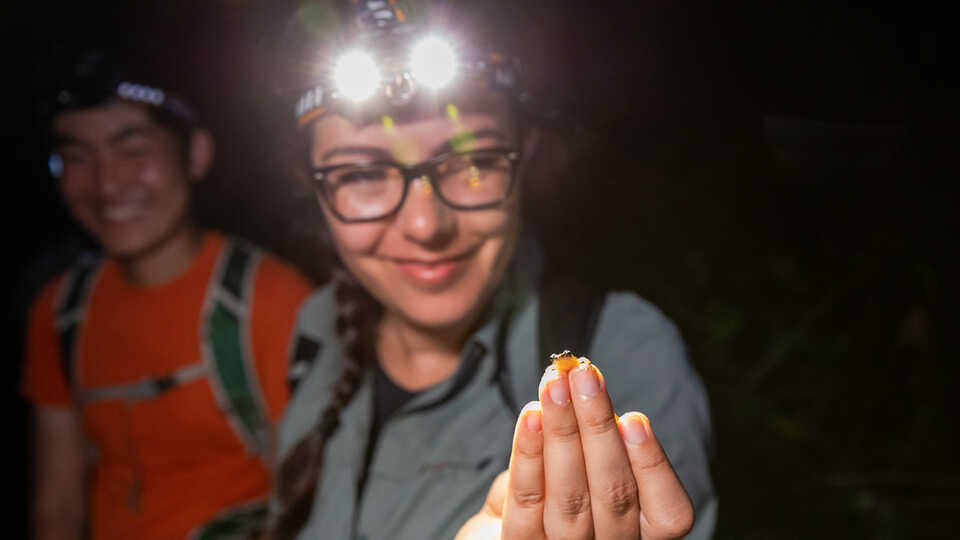
Academy curator and Islands 2030 co-director Dr. Rayna Bell shows off an Antillean whistling frog (Eleutherodactylus johnstonei) while guiding a community night hike. A new genetic study of this species revealed it is native to the island of Montserrat and has been introduced to most of the islands in the Lesser Antilles, including St. Martin.
Where: St. Martin, Lesser Antilles (view map)
When: May 7-21, 2022
Why: Terrestrial biodiversity surveys; local collaborations
Who: The Academy’s Islands 2030 team (led by Co-Directors Dr. Rayna Bell and Dr. Lauren Esposito); local government, nonprofit, tourism, and community partners
Wow: 75% of all recent extinctions have happened on islands. Meet 3 of St. Martin’s most vulnerable species on our Twitter feed.
Gifts of all sizes power Academy science around the world. Consider a donation to support island ecosystem research in St. Martin and beyond.
All photographs on this page: Gayle Laird © California Academy of Sciences
